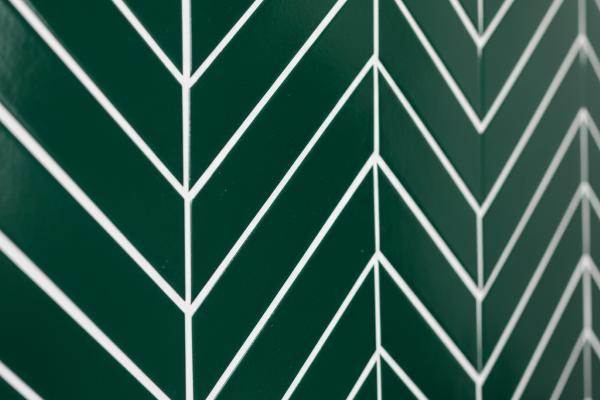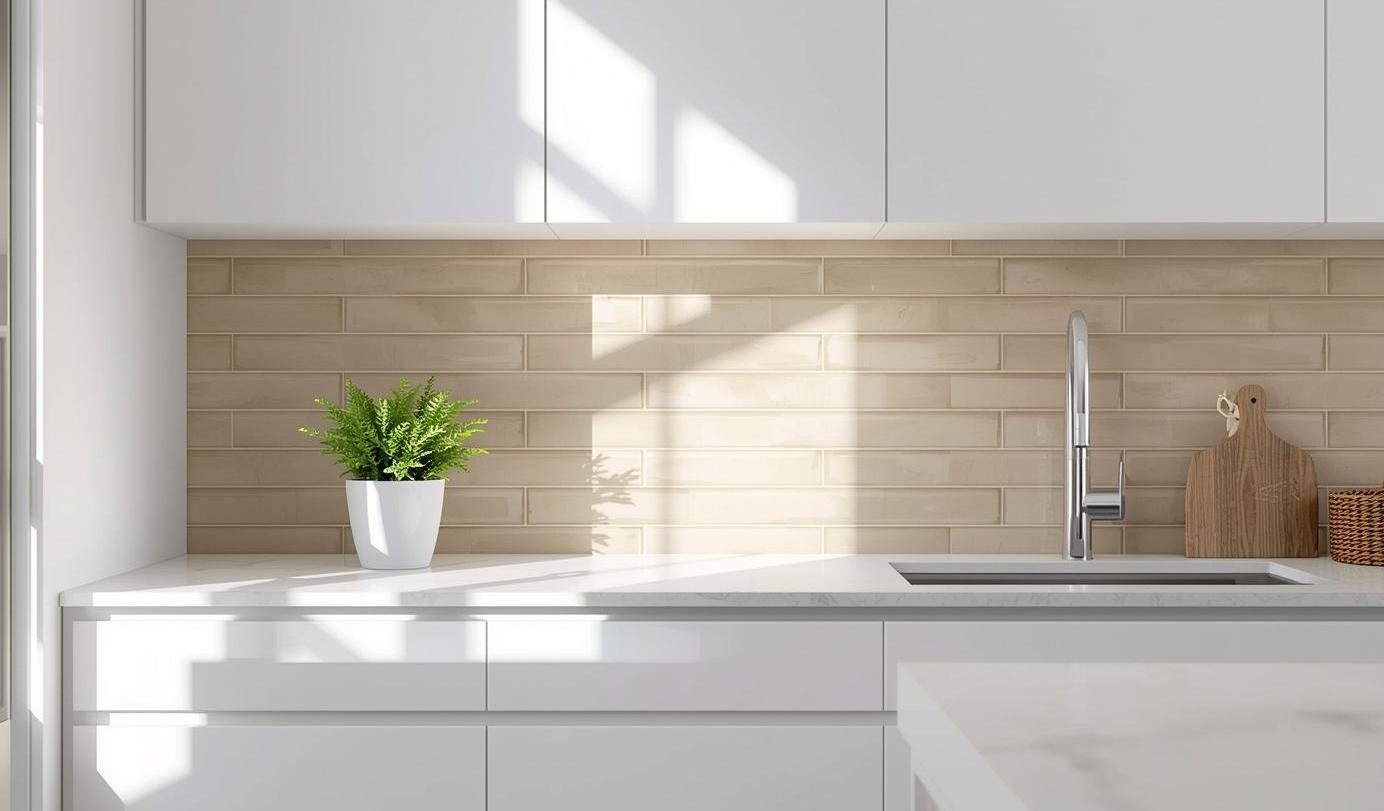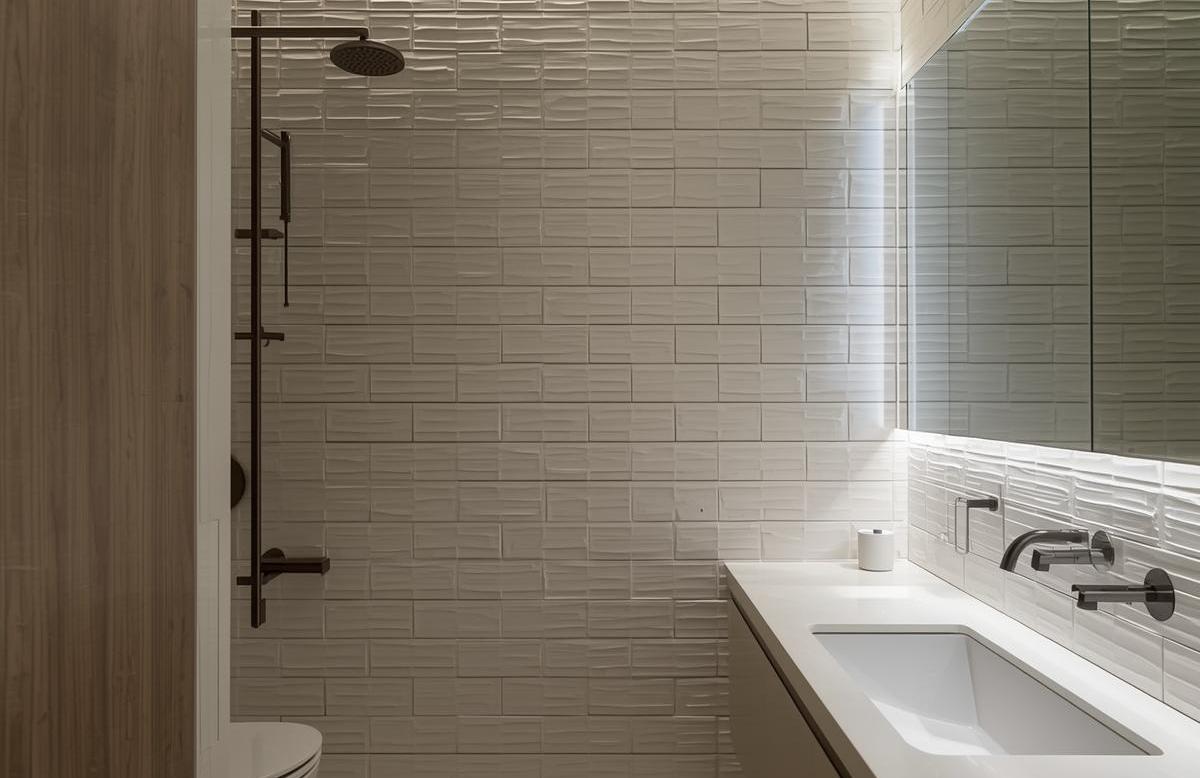Yes, subway tiles remain highly relevant in 2025, evolving far beyond their traditional white 3x6 format into diverse colors, creative layouts, and textured finishes. Today's subway tile installations feature colored subway tile options, unexpected patterns like herringbone subway tile backsplash and chevron arrangements, plus subway tile with dark grout combinations that feel distinctly contemporary rather than dated.
Current kitchen design research shows subway tiles appearing in 68% of new residential projects, but installation methods have shifted dramatically toward unconventional applications. This article explores how modern homeowners reinvent subway tiles through innovative patterns, surprising color selections, and strategic grout choices that keep this classic material feeling fresh.
From Transit Stations to Modern Design
Subway tiles earned their name from New York City's underground stations in the early 1900s, chosen for durability in high-traffic public spaces. Fast forward to 2025, and designers treat subway tiles as blank slates. The basic rectangular shape now comes in dozens of size variations, from oversized 4x12 planks to petite 2x4 formats. Material options expanded from ceramic to include porcelain subway tiles with enhanced durability, glass versions, and cement-look finishes.
What keeps subway tiles current is their adaptability. A ceramic subway tile backsplash paired with brass fixtures reads entirely different from the same tile combined with black steel hardware. The predictable horizontal running bond pattern now signals dated thinking. Contemporary installations embrace vertical subway tile arrangements that stretch ceiling heights visually, making spaces feel taller without requiring specialty tiles.
Pattern Innovation: Beyond Basic Stacking
Modern subway tile layouts demonstrate creativity through geometry, proving that pattern changes alone refresh aesthetics completely.

Herringbone Subway Tile Backsplash
Herringbone creates sophisticated visual movement through 45-degree angled placement, forming distinctive V-shaped patterns. This layout works brilliantly in narrow galley kitchens where zigzag designs draw eyes across space width. The technique requires more cutting and increases labor costs by 25-35%, yet professional installers using backsplash installation guides maintain consistent spacing and precision.

Chevron Subway Tile Arrangements
Chevron differs from herringbone through precise meeting points creating continuous zigzag lines without breaks. This requires tiles cut at exact angles, typically 45 degrees, demanding careful measurement during installation. Chevron patterns work particularly well as focal wall treatments in shower enclosures or behind ranges where the dramatic zigzag creates architectural interest without overwhelming the room.

Basketweave Subway Tile Patterns
Basketweave patterns alternate horizontal and vertical tile pairs to mimic woven textiles. This classic design gains modern relevance through color blocking and contrasting grout colors. Perfect for bathroom floors, the interlocking layout adds visual texture without complicating cleaning. Square tiles create authentic basketweave arrangements with dimensional appeal for classic and contemporary spaces.
Color Strategies That Feel Current
White subway tiles dominated for decades, but today's designers embrace colored subway tile options that announce personality.
Earthy Neutrals Replace Stark White
Warm beiges, soft taupe's, and creamy off-whites replaced cold brilliant whites in contemporary installations. These subtle shifts feel more organic and less clinical. Industry analysis of the ceramic tile market confirms the growing demand for these warmer, neutral tones across residential and commercial applications. Pairing neutral tile colors with natural wood tones creates cohesive layers instead of harsh contrasts. Browse tiles organized by color to see dozens of neutral variations.
Bold Single-Color Statements
Deep forest greens, navy blues, terracotta oranges, and charcoal grays appear as full-wall installations that anchor entire room palettes. Rather than timid accent walls, these confident choices cover entire backsplashes or shower enclosures. A navy blue subway tile backsplash with brass fixtures creates dramatic contrast without pattern mixing.
Two-Tone Color Blocking
Strategic placement of two subway tile colors creates geometric interest. Lower wall portions receive darker colors while upper sections stay lighter, or diagonal stripes and checkerboard arrangements emerge through intentional planning. This requires precise layout before installation begins.
Grout Selection Makes or Breaks Modern Installations
The space between tiles matters as much as the tiles themselves. Subway tile with dark grout combinations emerged as the defining shift that updated this classic material.
Dark Grout Defining Individual Tiles
Black, charcoal, and deep gray grout lines outline each subway tile distinctly, emphasizing the geometric grid pattern. This contrasts sharply with traditional white-on-white installations where grout disappeared visually. Grout application techniques remain critical for achieving clean results, as dark grout shows sloppy workmanship immediately.
Matching Grout for Seamless Looks
Some modern installations choose grout colors matching tile colors, creating nearly seamless surfaces. This suits larger format subway tiles (4x12 or bigger) where reduced grout line visibility emphasizes tile surface. Standard 1/8-inch grout lines feel dated compared to 3/16-inch spacing that emphasizes handmade quality.
Subway Tile Kitchen Ideas That Work
Kitchen applications demonstrate subway tiles' versatility across surfaces and functions.
Full-Height Backsplashes - Extending tiles from countertop to ceiling creates dramatic vertical emphasis. A glossy ceramic subway tile installation reflects light while remaining easy to clean. This suits open-plan layouts where kitchen walls become visible from living areas.
Focused Cooktop Surrounds - Limiting subway tiles to areas directly behind ranges creates focal points without full-wall commitment. This concentrates budget on high-impact zones. Mixing subway tiles with other tile types works well.
Waterfall Edge Treatments - Some contemporary kitchens extend subway tile from backsplash down island or peninsula side panels. This continuous coverage works best with rectified tiles having perfectly straight edges.
Subway Tile Bathroom Trends
Bathrooms showcase subway tiles differently, with moisture resistance taking priority.
Floor-to-Ceiling Shower Enclosures - Covering entire shower walls creates spa-like environments. Porcelain subway tiles handle constant moisture better than ceramic versions, maintaining appearance despite daily use.
Accent Walls Behind Vanities - Positioning subway tiles on the wall behind bathroom vanities provides design interest without full-room expense. This frames mirrors and lighting fixtures while keeping remaining walls painted.
Mixing with Geometric Mosaics - Contemporary bathrooms combine subway tiles on large walls with smaller mosaic tile patterns on shower floors. Professional designers pull colors from mosaic patterns into surrounding subway tile selections.
Comparing Modern Subway Tile Applications
Application | Best Pattern | Ideal Color | Grout Choice | Cost Factor |
Kitchen Backsplash | Herringbone or Vertical | Warm neutral or bold single color | Dark contrast | Moderate |
Shower Walls | Vertical or Basketweave | White or light gray | Matching or slight contrast | Moderate to High |
Bathroom Floor | Basketweave | Medium to dark tone | Matching | High |
Accent Wall | Chevron or Herringbone | Bold color statement | Dark contrast | Low to Moderate |
Full-Height Kitchen | Running Bond or Stacked | Soft neutral | Slight contrast | High |
Pros and Cons of Using Subway Tiles in 2025
Advantages
Design Flexibility - Simple rectangular shapes adapt to countless patterns and styles.
Widespread Availability - Nearly every tile retailer stocks multiple options.
Proven Durability - Decades of commercial use prove subway tiles withstand moisture and wear.
Budget Range Options - Choices span economy ceramic under $5/sq ft to premium versions exceeding $25/sq ft.
Disadvantages
Grout Maintenance - Multiple grout lines demand regular cleaning and resealing.
Installation Labor - Complex patterns require more cutting, increasing costs.
Restricted creative options that reduce adaptability, limiting diverse design choices and overall aesthetic versatility.
Popularity Creates Monotony -Widespread use requires extra effort through pattern or color to achieve distinctiveness.
Installing Subway Tiles: A Simplified Approach
Step 1: Plan Your Layout Measure walls and sketch desired patterns on graph paper. Calculate tile quantities accounting for grout width. Use tile installation resources for precise formulas.
Step 2: Prepare Surfaces Clean walls thoroughly. Apply waterproof backer board in wet areas like showers. Prime painted drywall for proper bonding. Reference bathroom tile replacement guides for substrate preparation.
Step 3: Set Tiles Apply thin-set mortar using notched trowels. Press tiles firmly with spacers for uniform grout lines. Check level frequently.
Step 4: Grout and Seal After thin-set cures (24-48 hours), apply grout using rubber floats. Clean excess immediately. Apply penetrating sealer after grout cures (72 hours) to prevent staining and mold growth.
What Makes Subway Tiles Work in Contemporary Design
Success lies in breaking away from default choices. Standard white tiles in horizontal running bond with matching grout telegraphs "contractor special." Intentional decisions about pattern, color, or grout elevate installations.
For instance, keeping tiles white but choosing vertical orientation and dark grout immediately updates the look. Or selecting bold color in traditional layout creates impact through hue. Shopping by tile size reveals how different proportions change character. Oversized 4x12 tiles feel more modern than standard 3x6 versions.
Material selection matters equally. Glossy surfaces reflect light and feel traditional, whereas matte finishes absorb light for contemporary sophistication. Official NKBA Planning Guidelines for Kitchens and Bathrooms provide guidance on proper waterproofing techniques. These decisions separate thoughtful installations from mundane ones.
Creative Backsplash Ideas Using Subway Tiles
Ombre Gradients - Transitioning from dark tiles at countertop through medium tones toward lighter colors near cabinets creates visual flow. Framed Panels - Surrounding central subway tile fields with decorative borders creates artwork effects. Mixed Finish Combinations - Alternating glossy and matte tiles in the same color catches light differently. Geometric Inserts - Interrupting subway tile fields with small mosaic tile panels adds custom details.
The Verdict: Subway Tiles' Place in Modern Design
Subway tiles absolutely remain stylish in 2025 through thoughtful implementation. The rectangular format provides endless possibilities through creative patterns, unexpected colors, and strategic grout decisions. What feels dated is predictable all-white horizontal installation, not the tile shape itself.
Contemporary renovators treat subway tiles as design building blocks. They layer these rectangles into complex patterns, combine them with complementary materials, and use color to express personality. The full range of tile styles available today means subway tiles integrate seamlessly into any aesthetic.
For homeowners planning updates, subway tiles offer proven performance with design flexibility that accommodates both current trends and future evolution. Approach your project with intention, making deliberate choices about pattern, color, and grout.
Ready to explore how subway tiles might work in your renovation? Contact our team to discuss pattern options and see material samples. Browse our complete tile collection online or visit our Northern Nevada and Northern California showrooms to see modern installations in person.
Frequently Asked Questions
Are subway tiles outdated in 2025?
No, subway tiles remain highly relevant when installed with modern patterns like herringbone or vertical layouts, contemporary colors beyond basic white, and contrasting grout choices. The dated look comes from predictable horizontal white-on-white installations, not from the tile format itself.
What's the most popular subway tile pattern right now?
Herringbone and vertical layouts dominate current installations, with both patterns creating visual interest that surpasses traditional horizontal running bond. Chevron patterns also gain popularity for accent walls and shower feature surfaces.
Should I use dark or light grout with subway tiles?
Dark grout with light tiles creates bold graphic impact that feels distinctly modern, while matching grout colors produce seamless contemporary looks. Avoid white grout with white tiles as this combination appears dated and shows dirt immediately.
What subway tile colors look best in kitchens?
Warm neutrals like beige and taupe work universally, while bold single colors like navy, forest green, or terracotta make strong style statements. Cool brilliant white feels clinical; opt for softer off-white or cream tones instead.
Can I install subway tiles myself or should I hire professionals?
Simple horizontal running bond patterns suit confident DIYers with basic tile experience, but complex layouts like herringbone or chevron warrant professional installation. The increased cutting and precise alignment required for angled patterns significantly increases difficulty and potential for costly mistakes.

